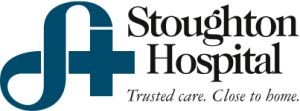The Hospital-Acquired Condition Reduction Program, established by the healthcare reform law, penalizes hospitals that fall within the worst-performing quartile, based on measures of adverse events occurring during hospital stays, such as pressure ulcers, pulmonary embolisms and certain types of healthcare-associated conditions.
According to CMS data released Thursday, 724 hospitals were in that bottom-scoring range for 2015. Those facilities will have their payments for all hospital discharges occurring after Oct. 1, 2014, reduced by 1%. (To view individual hospital HAC scores and whether they may be subject to the 1% penalty, visit the Modern Healthcare Value-Based Purchasing/HAC database.)
The HAC Reduction Program is part of a far-reaching effort that, along with the CMS’ value-based purchasing and readmissions reduction programs, aims to aggressively move the federal government toward paying for high performance rather than volume of services.
The CMS estimated that overall payments would drop by roughly $330 million in 2015 due to the HAC program.
Under the HAC program, hospitals are scored across two measurement domains. The first, weighted 35%, is a composite patient-safety measure developed by the Agency for Healthcare Research and Quality, which includes eight indicators such as postoperative hip fracture rate and accidental puncture rate. The second domain, weighted at 65%, consists of two hospital-acquired infection measures drawn from data reported to the National Healthcare Safety Network, the Centers for Disease Control and Prevention’s online infection reporting system.
The HAC program has drawn sharp criticism from hospitals and some experts, who predict that it will disproportionately affect hospitals that serve poorer and sicker patient populations.
Teaching hospitals might be hit especially hard because unlike the value-based purchasing and readmissions programs, which levy a penalty on base operating DRG payments, the HAC program’s 1% penalty applies to total payments. That includes disproportionate-share payments received by hospitals that treat large numbers of poor patients as well as indirect medical education payments.
The release of the HAC data comes just weeks after HHS announced an “unprecedented decline” in avoidable hospital harm from 2010 to 2013, which officials said prevented an estimated 50,000 deaths and saved nearly $12 billion. HHS attributed much of that progress to its own quality-improvement initiatives, including the $1 billion Partnership for Patients.
Follow Maureen McKinney on Twitter: @MHMMcKinney







